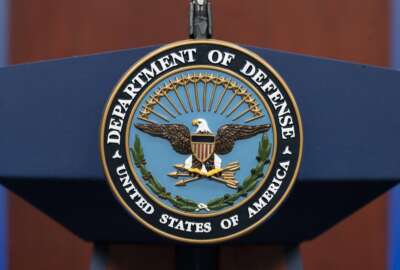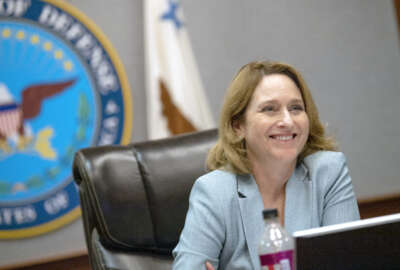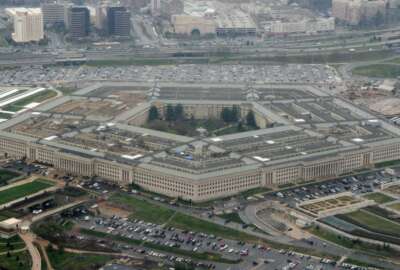When it comes to joint efforts, OSD seeks collaboration over ‘sixth service’ role
When it comes to solving inherently joint problems such as command and control at large scale, the OSD is a “partner to the services and not an opponent.”
When addressing joint needs that don’t fit neatly within any one military branch’s responsibilities, services get wary of initiatives like the Rapid Defense Experimentation Reserve (RDER), seeing it as a move by the Office of the Secretary of Defense (OSD) to act as a “sixth service.”
While solving inherently joint problems such as command and control at large scale makes strict alignment of traditional roles and responsibilities under Title 10 increasingly complex, Assistant Secretary of Defense for Mission Capabilities Thomas Browning said he sees his office as a “partner to the services and not an opponent.”
“In reality, going to the dating service term, my vision of RDER is we find a problem that doesn’t fit a specific service, we find technologies that could potentially fill that gap. But over that…period, not only are we figuring out how to fill that gap, but we’re figuring out how to enduringly fill that gap,” Browning said during the Hudson Institute event Tuesday.
“This is all about deciding when it’s valuable when we’ve grabbed onto something really cool and important and game-changing, which service should now own that. And what I’m doing is we’re evolving and modifying what it is that those services are organized, trained, equipped for so that they’re always healthy.”
For example, the Pentagon recently tapped the Air Force as the executive agent of the Joint Fires Network (JFN), a system that links the entire battlefield into a unified “common operating picture” that all services can access in real-time. The effort is part of the DoD’s Joint All-Domain Command and Control initiative or CJADC2, the department’s nascent system that will enable real-time data sharing and decision-making across all domains — land, air, sea, space, and cyber.
JFN is currently being tested within the U.S. Indo-Pacific Command (INDOPACOM) area of responsibility, but the Air Force will soon be taking the reins of the prototype as it transitions to a program of record.
“As our acquisition sustainment partners looked at how to transition this thing where there’s not a transition path. We actually came up with a unique, never-done-before service-led model. For JFN, the Air Force is leading it — that wasn’t necessarily the answer we walked in with. What’s cool is for that one little piece of the puzzle, we now have a solution that works for Title 10,” said Browning.
“My vision is we’re taking a joint look at it because we have to. But the way we buy things is through services, and so the right way to do is to find that service that is the best possible partner.”
But the process of identifying and determining which service should take a lead on a joint initiative often “breaks a lot of people’s brains,” said Browning.
“Some of it’s going to get messy. We do have some challenges where I think multiple services think it’s in their bailiwick. This idea of taking problems that transcend service, problems that never existed before, like the great increase in unmanned vehicle activity. Who does that? Who does [Intelligence, Surveillance, and Reconnaissance] forward? Should that all be space now? Or should that all be the Air Force? Or should that be an intermix of everybody?”
Getting services’ buy-in through early involvement
While the OSD wants to be a partner to the services when it comes to solving new joint needs, there is no “magical bucket of money” to fund those programs.
“We want to execute it through the services at times because that gets buy-in from the services,” said Browning.
“Whether you carve it out beforehand and then give it back to them, or whether you ask them for it afterward. In a humorous way, I think I’d rather pull the money out when they’re not looking and then give it back to them and make them think we gave it to them. But we’ve woken up to the reality that in a reasonably sustained budget, if you want to do something new, you’re not going to do something old. If we know they have a problem and we find the perfect answer for a service to do it, it should go into the budget right now.”
Since the military services face so many competing priorities at any given moment, it’s critical to build compelling evidence through the experimentation phase to provide services with proof that a new solution is worth prioritizing in their budgets.
“I go back to this information part and the value of the experimentation because what I want to have is so much compelling evidence that this is the right thing to do right now, that they’re not afraid of it,” said Browning.
Copyright © 2025 Federal News Network. All rights reserved. This website is not intended for users located within the European Economic Area.







